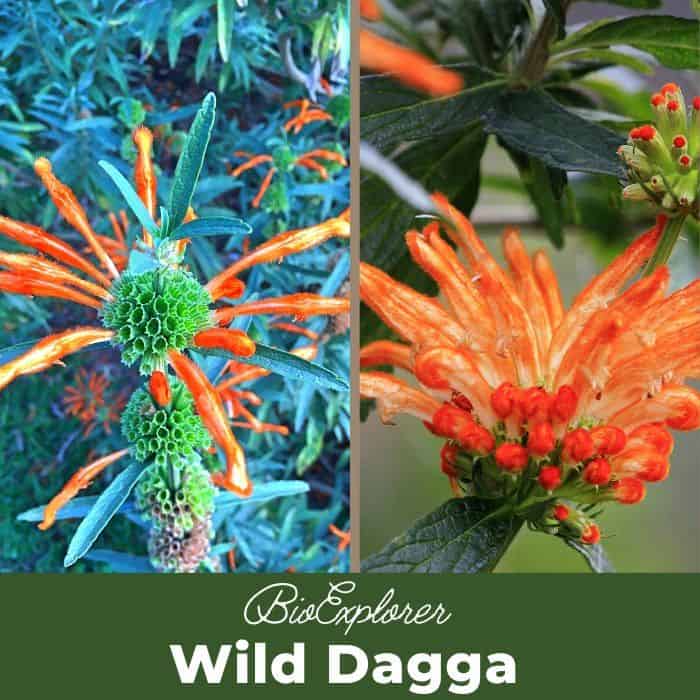- Plant Type: Shrub
- Common Names: Wild Dagga. Lion’s tail, Minaret Flower.
- Color: Orange
- Flower Dimensions: 1.57- 2.16 in length.
- Flowering Season: Spring, Summer, and Autumn.
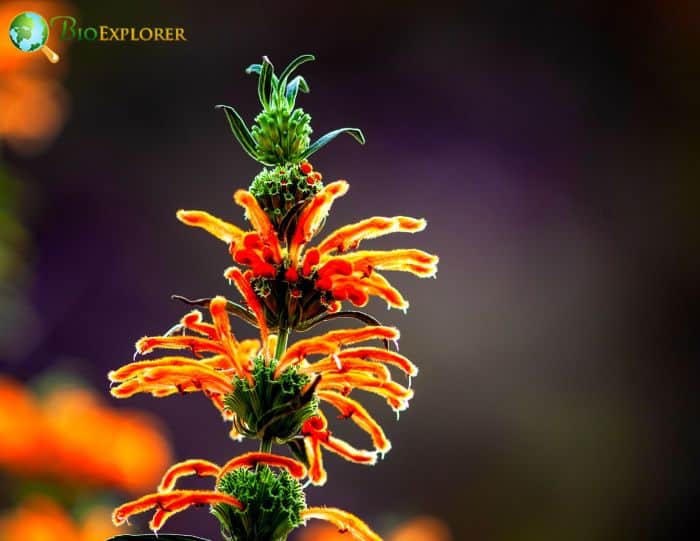

Leonatis ocymifolia is a flowering shrub of the family Lamiaceae. It is a hairy shrub that can grow 1-2 meters high.
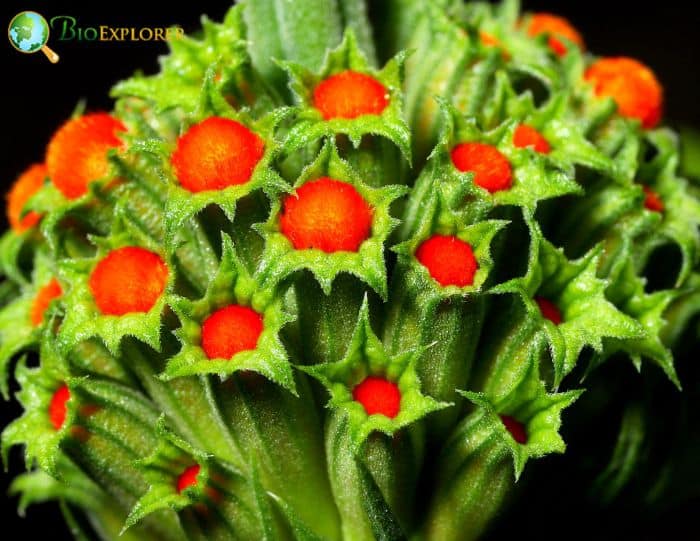
- The stems of the Wild Dagga are in 4 angles. In the cross-section, these stems appear in squares. The Wild Dagga is woody and lanky.
- The leaves of the Wild Dagga are narrow or broad and hairy. The leaves exist in pairs.
- The leaves of the Wild Dagga are opposite and usually petiolate. The leaf margins are toothed.
- The flowers of the Wild Dagga are tubular. They are in the inflorescence of dense, spiky golfball-sized heads. The flowers are separated into lips (parts); the small lower lip and the hooded upper lip.
- Wild Dagga plant is drought-tolerant and wind-tolerant.
Where can Wild-Dagga be mostly spotted?

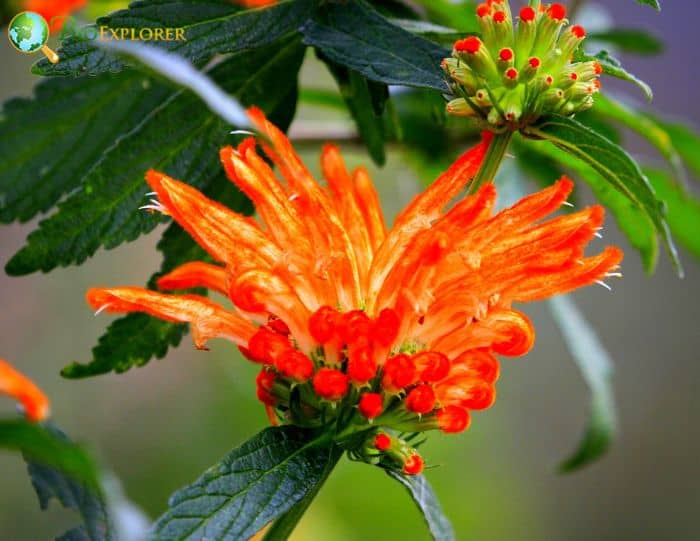

Interesting Facts about Wild Dagga
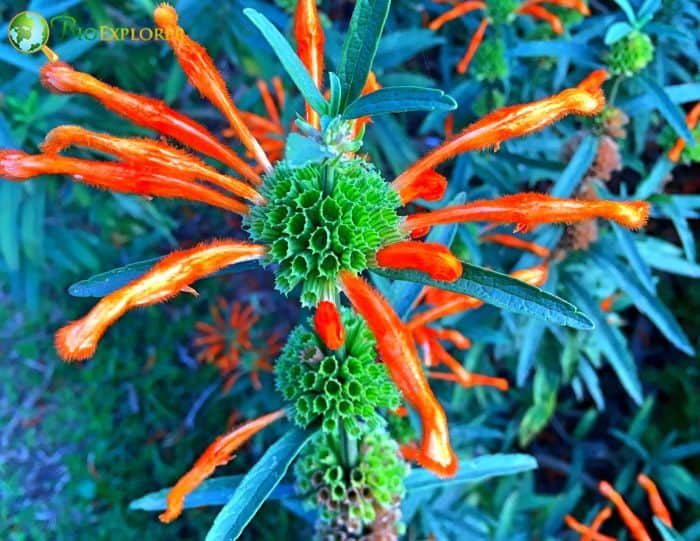
- The Wild Dagga[1] plants have medicinal value. They are used by different tribal groups for the treatment of aches and pains during the flu. In addition, research showed[2] that the leaf and fruit extract of L. ocymifolia manifests antibacterial and anti-diarrhoeal properties.
- The Wild Dagga plant is also known to help with epilepsy, Type 2 diabetes, constipation, and hemorrhoids.
- The genus name Leonotis[3] is from the Greek words “lion” and “otis“which means “lion” and “ear” respectively. This alludes to the form of the flower that resembles the lion’s ear.
- The species name “ocymifolia ” means that the leaves of the Wild Dagga look like that of the basil plants.
- The fresh or dried form of the ‘Wild Daggas leaves, smaller stems, and sometimes flowers and fruits are sold in the marketplace. These materials are used to apply infusion or decoction externally or taken internally. A study[4] showed that the leaf extract of L. ocymifolia manifests analgesic and anti-inflammatory properties when experimented with rodent models.
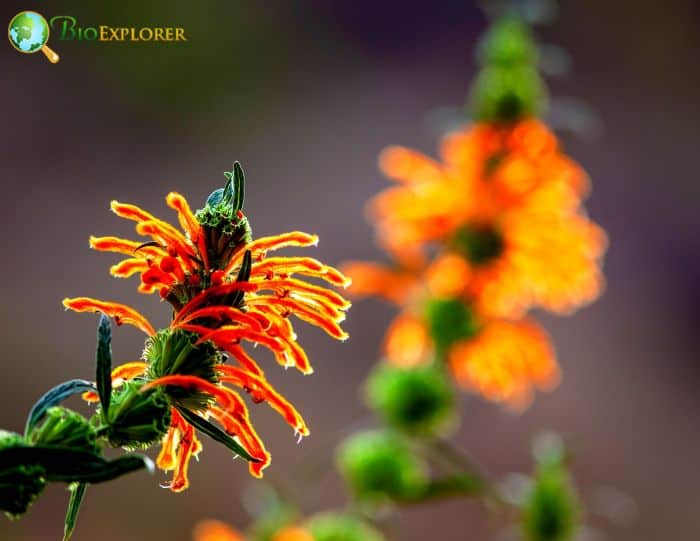

Suggested Reading: 8 Different Classifications of Flowers
Cite This Page
APA7MLA8Chicago
BioExplorer.net. (2024, May 14). Wild Dagga. Bio Explorer. https://www.bioexplorer.net/plants/flowers/wild-dagga/.
BioExplorer.net. "Wild Dagga" Bio Explorer, 14 May 2024, https://www.bioexplorer.net/plants/flowers/wild-dagga/.
BioExplorer.net. "Wild Dagga" Bio Explorer, May 14 2024. https://www.bioexplorer.net/plants/flowers/wild-dagga/.


